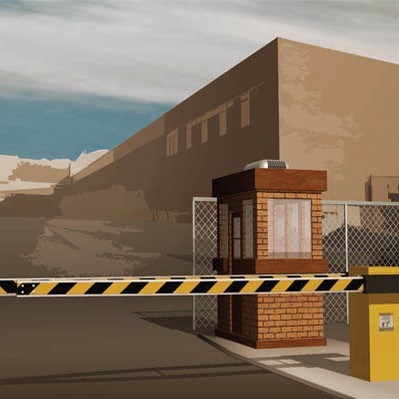What type of automatic gate opener do I need for my gate?
It would be best if you considered several factors to decide what automatic gate opener is best for your needs. For instance, what is the weather like in your area? Is there a good chance that, should you choose to install a slide gate, the track that your gate operates along might become obstructed by snow or ice? What about the space available around the gate; does it have enough room to swing inwards or outwards, or should its movement be more compact? Think about the speed the wind may get up to in your area and how that might affect the material of the gate. What is the material of your gate, and what range of motion can it safely withstand? What sort of track will it operate along if it is a sliding gate? Should it be a cantilever? Overhead? A v-groove track? An enclosed track? What type of rollers would be best to implement? As you can see, there are many possibilities, and it is essential to consider as many as possible before deciding what sort of automatic gate opener to install. If you have any trouble, consult the following questions and their answers or contact our sales team for more information.
Can I update an existing gate with an automatic gate opener, or should it be newly installed?
Whether new or old, it must be in working condition and comply with ASTM F-2200 standards before being automated. Make sure there are covers over the gate’s rollers, pinch points are protected, and slide gates must be screened to 2.25”. Visit our page on UL 325 Safety Standards to learn more. If your gate is old and damaged, it may not be possible to update it. Gate operators are not meant to correct issues with your gate; they merely make operating them more convenient.
What should I know about my gate before updating it?
Before looking for your automated gate opener, you should have all specifications in mind. Specifications include height, weight, and whether or not it moves freely.
My area is subjected to frequent/prolonged below-freezing temperatures. Is this an issue?
This is not an issue. However, if this is the case, you should consider adding a heater to the installation site or purchasing a cold-weather package that typically includes Arctic Oil, a heater, and a cogged belt.
Can I automate a dual gate?
Yes, up to two Linear automatic gate openers can be networked together to work as a pair in a dual gate installation, and an LRA controller can run two arms, the second of which is sold separately.
Does it matter how many times my gate opens and closes per day?
If you expect the gate to be operated many times a day, this would require a heavy-duty gate operator. In this case, you should consider variable speed operators.
What voltage and phase are required for my gate to operate?
Linear offers a variety of options, making the answer to this question entirely dependent on what voltage is available at the installation site. We recommend operating at the highest voltage and 3-phase power, if available. Here are the most commonly used combinations of voltage and phases:
- 120V - 1-Phase
- 208V - 1-Phase
- 230V - 1-Phase
- 208V - 3-Phase
- 230V - 3-Phase
- 460V - 3-Phase
Where and how should the operator be installed?
Some operators are designed to be pad mounted, while others are post-mounted. Depending on the kit, certain types can mount an operator on either a pad mount or a post mount.
Can automatic gates operate during power outages?
All Linear operators have a manual release device standard, some models offer built-in battery backup, and some models can operate from an optional external battery backup unit. Some local codes require the use of battery backup.
How will my gate know when to open or close?
More often than not, the answer is access control accessories. Consider the requirements for residents and guests, as well as emergency vehicles. Opening devices include key switches, keypads, radio controls, intercoms, telephone entry systems, SOS emergency vehicle sensors, and gooseneck stands for mounting. As for exiting, the use of an automatic exit vehicle detector–a free exit loop–is the most common method. Most vehicle detectors are plug-in style; others need to be wired in. Loop wire kits or pre-formed loops are part of these systems and can be sold with the operator.
How do I ensure only one vehicle passes through at a time when entering my property?
The built-in auto-close timer is the most common method. This requires vehicle detectors (loop detectors) to prevent the gate from automatically closing on a vehicle. Still, it allows only enough time for one vehicle to pass through safely.




